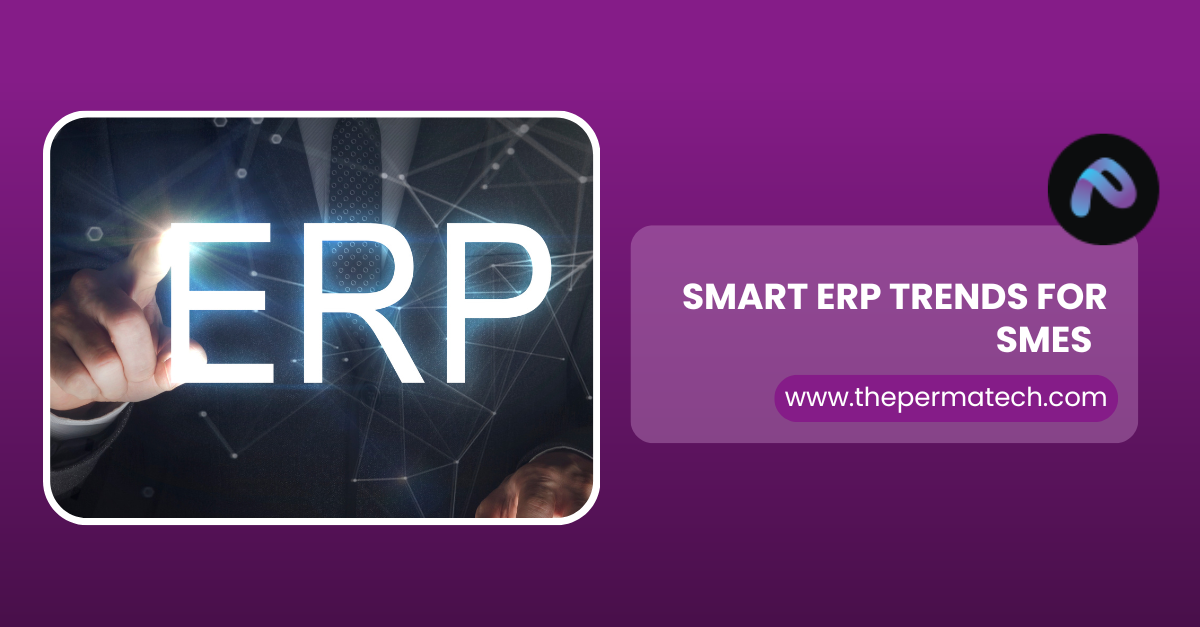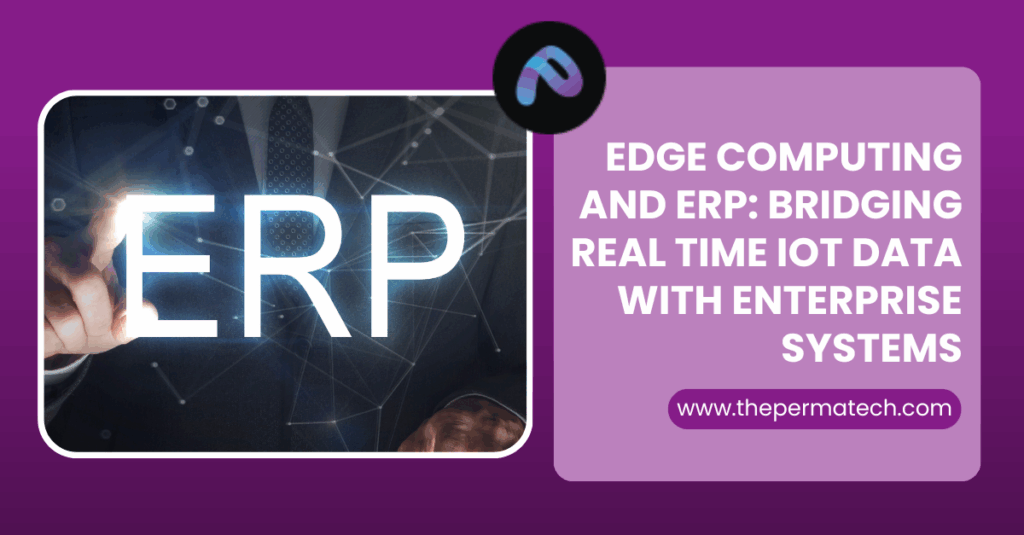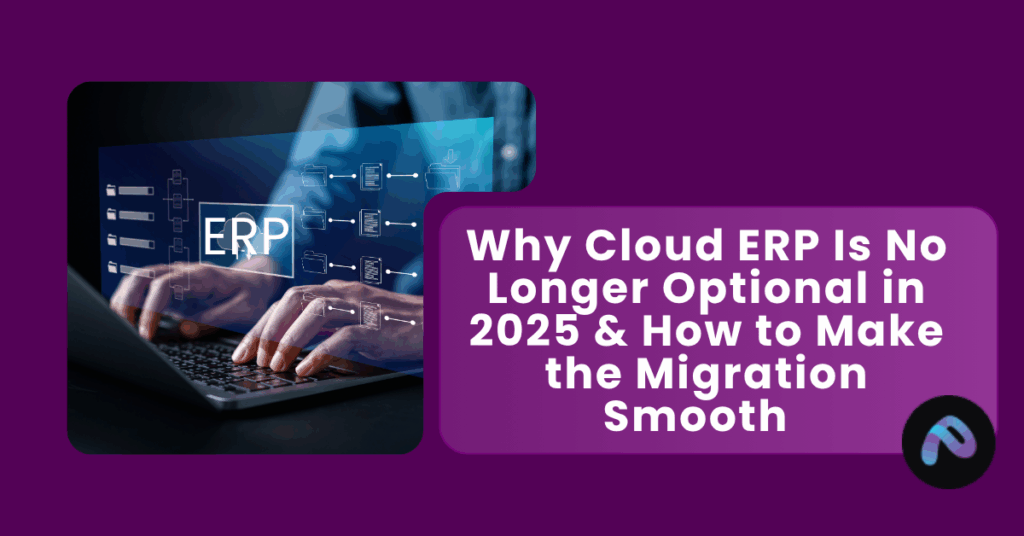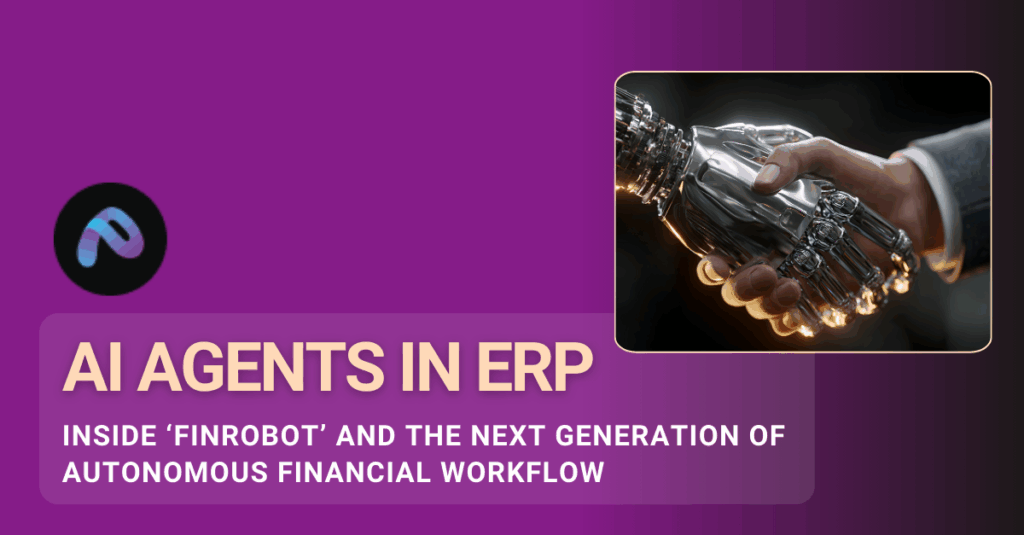ERP solutions have evolved beyond back office automation. Modern platforms integrate AI, IoT sensors, and predictive analytics, enabling small and medium manufacturers to make decisions in real time.
According to Gartner’s 2025 Manufacturing Insight Report, 75 % of SMEs are planning ERP modernization within 24 months, primarily to gain data visibility and production flexibility.
The global ERP market valued at $56 billion in 2024 is projected to reach $76 billion by 2027, driven by cloud adoption and modular solutions.
| Metric | 2024 Value | 2027 Projection | CAGR |
| Global ERP Market Size | $56 B | $76 B | 10.7 % |
| SME ERP Adoption Rate | 61 % | 78 % | — |
| Cloud ERP Share | 44 % | 68 % | — |
Real Time Data: The Core of Modern Manufacturing
Real time ERP systems connect factory floors, supply chains and finance teams into a unified data ecosystem.
Key technologies powering this include:
- IoT enabled machines that stream data directly to ERP dashboards
- Digital twins for predictive maintenance
- Edge computing to process sensor data instantly
A Deloitte 2025 survey shows that SMEs using real time ERP analytics experience:
- 30 % faster production cycle adjustments
- 25 % lower machine downtime
- 19 % reduction in inventory waste
ROI Impact
| Efficiency Lever | Avg. ROI Uplift | Key Benefit |
| Real-time dashboards | 18 % | Faster response to demand shifts |
| Predictive maintenance | 21 % | Reduced unplanned downtime |
| Supply-chain visibility | 24 % | Fewer stock-outs, better planning |
Artificial Intelligence in ERP: From Insight to Autonomy
AI is no longer an “add on” it’s the decision engine of next gen ERP.
AI driven ERP modules use machine learning to:
- Predict demand based on historical and external data
- Automate procurement and supplier rating
- Detect production anomalies before they escalate
IDC 2025 Manufacturing Pulse reveals that AI first ERP adopters realize an average ROI gain of 27 %, mainly through cost savings in procurement, scheduling, and predictive quality control.
Real World Example
A Tier-2 automotive supplier in Germany integrated AI forecasting within SAP S/4HANA Cloud, achieving:
- 14 % inventory reduction
- 11 % fewer late shipments
- ROI achieved in 13 months
Micro Innovation: The Agile Edge for SMEs
While large manufacturers invest in full digital overhauls, SMEs are increasingly winning through micro innovation small, targeted ERP enhancements that yield immediate gains.
Examples include:
- Adding a mobile inventory scanner module
- Automating invoice to payment reconciliation
- Embedding AI based quality scoring at production checkpoints
Forrester’s 2024 SME Tech Index shows that SMEs using iterative ERP improvements achieve ROI 2.3× faster than those pursuing large scale system replacements.
| Innovation Type | Avg. Cost | ROI Realization Time | ROI Multiplier |
| Micro-innovation (modular) | $30 K – $70 K | 6–9 mo | 2.3× |
| Full ERP overhaul | $250 K – $500 K | 18–24 mo | 1× |
Cloud ERP and Composable Architecture
By 2025, 70 % of new ERP deployments are on cloud or hybrid environments. Cloud ERP enables:
- Easier API integration with AI and IoT tools
- Lower upfront CAPEX for SMEs
- Built-in scalability for seasonal demand
Composable ERP architectures where businesses can choose and integrate microservices (finance, HR, manufacturing) let SMEs implement innovation incrementally, reducing disruption and cost.
Measuring ROI: How Data Driven ERPs Prove Their Worth
ERP ROI metrics in 2025 have shifted from cost-cutting to value creation:
- Revenue Uplift: 12 – 15 % (from faster quoting & custom orders)
- Cost Efficiency: 18 – 25 % (from AI-led optimization)
- Decision Speed: up to 3× faster
- Customer Retention: +9 % (due to accurate delivery promises)
A PwC global SME survey found that ERP projects delivering real time data + AI automation outperform traditional ERP deployments by 31 % in total ROI.
The ROI Equation for 2025 and Beyond
When SMEs combine real time visibility, AI automation and micro innovation, the synergy is exponential:
[
\text{ROI} = (\text{Operational Gain} + \text{Predictive Savings}) \times \text{Agility Factor}
]
ERP no longer serves as just a digital ledger; it’s an intelligent control tower for manufacturing.
By 2026, SMEs that adopt composable, AI powered ERP systems are expected to:
- Improve profitability by 18–22 %
- Cut operational costs by up to 30 %
- Reduce carbon footprint by 12 %, aligning with ESG standards
The Takeaway for SME Leaders
Modern ERP systems are the backbone of manufacturing intelligence.
Real time data offers clarity.
AI offers foresight.
Micro innovation offers agility.
Together, they form a high ROI trifecta for manufacturing SMEs.
Leaders embracing continuous digital evolution rather than one time transformation will define the next decade of industrial competitiveness.





